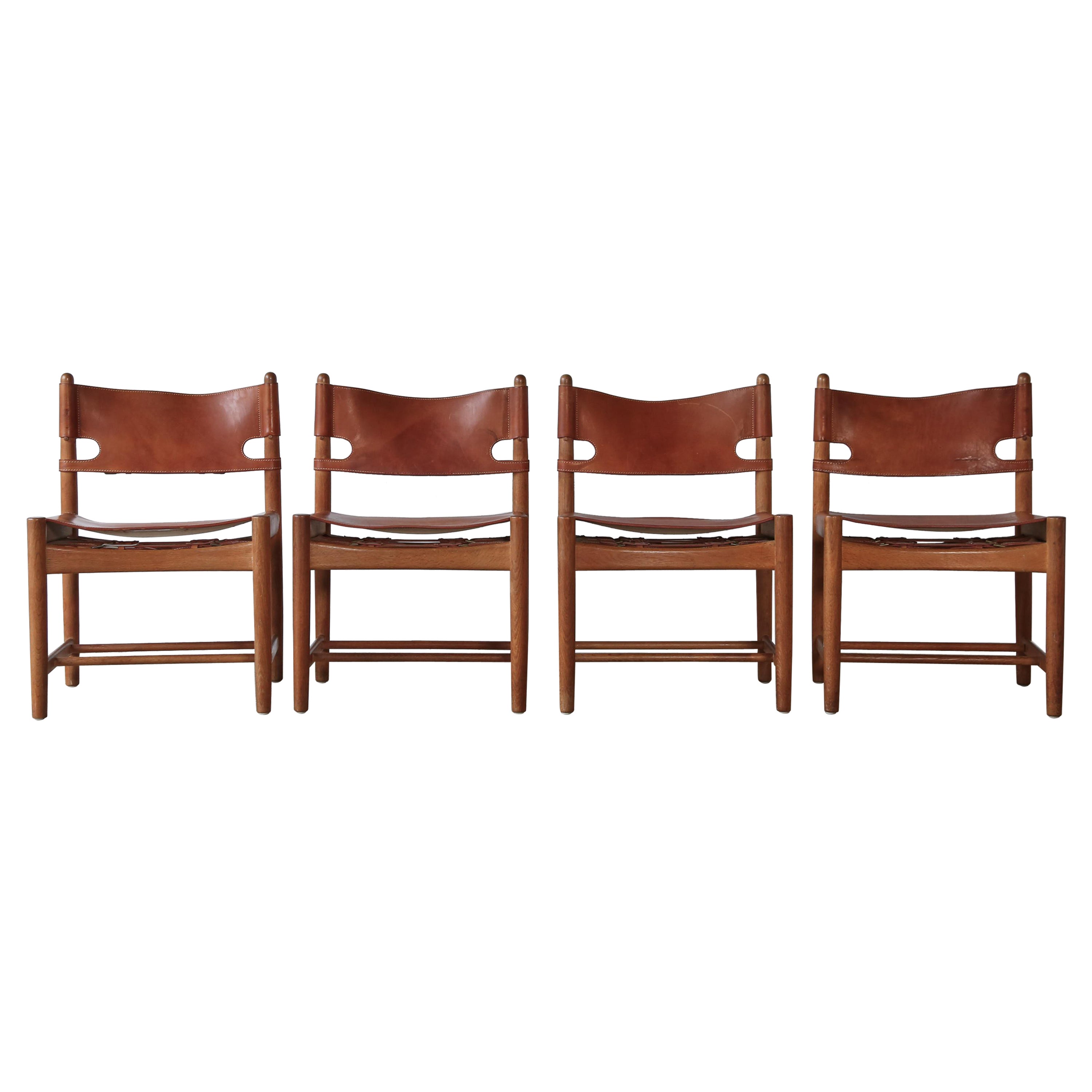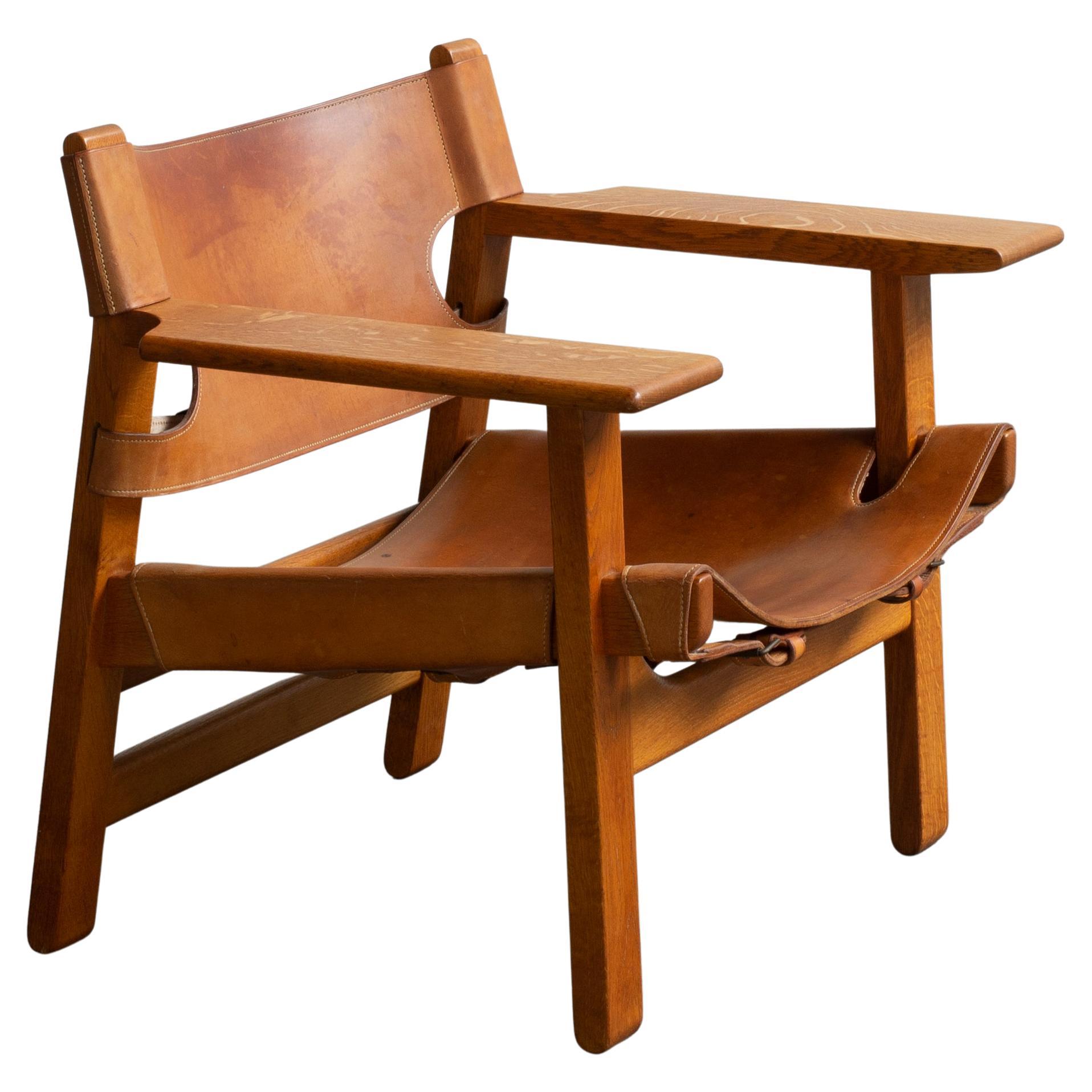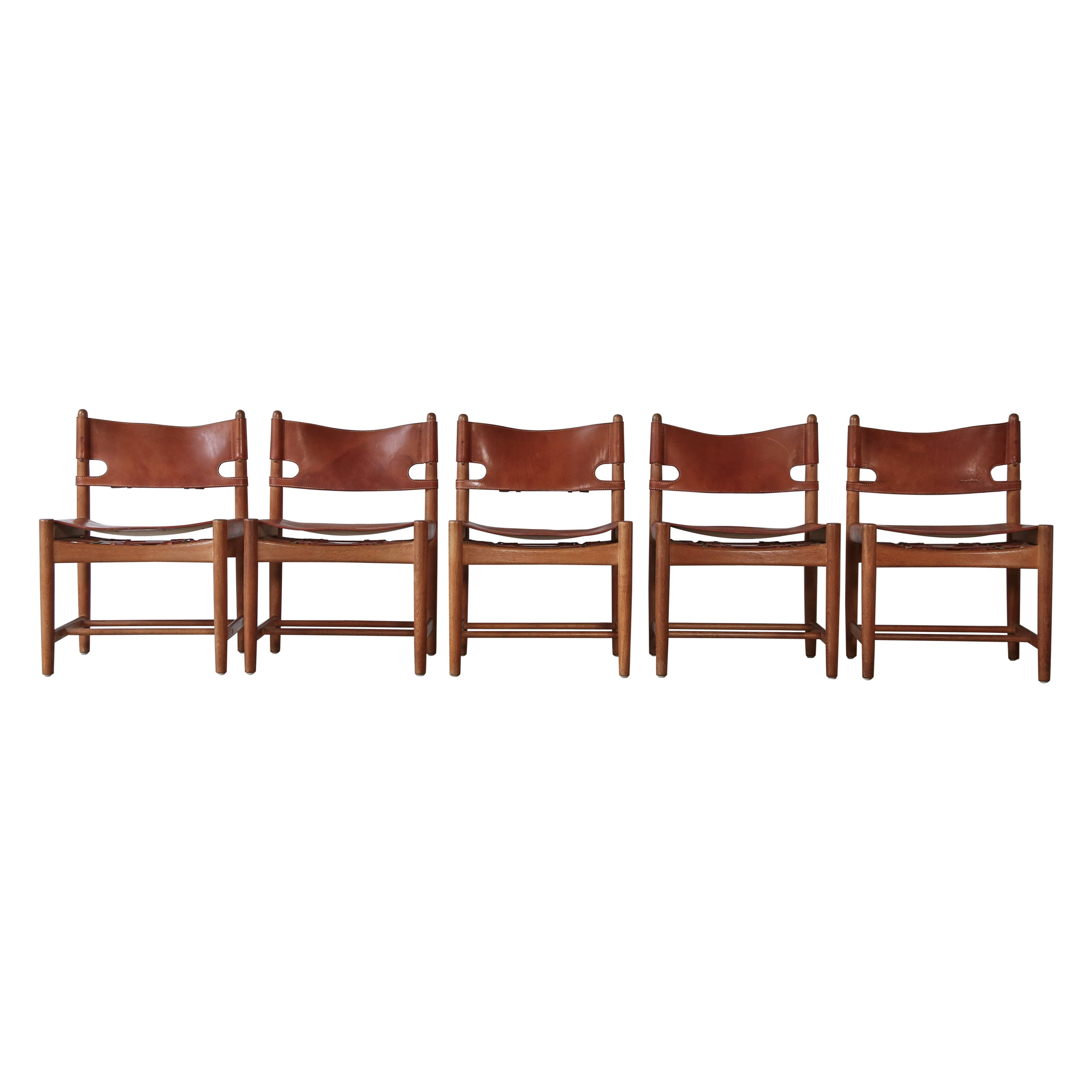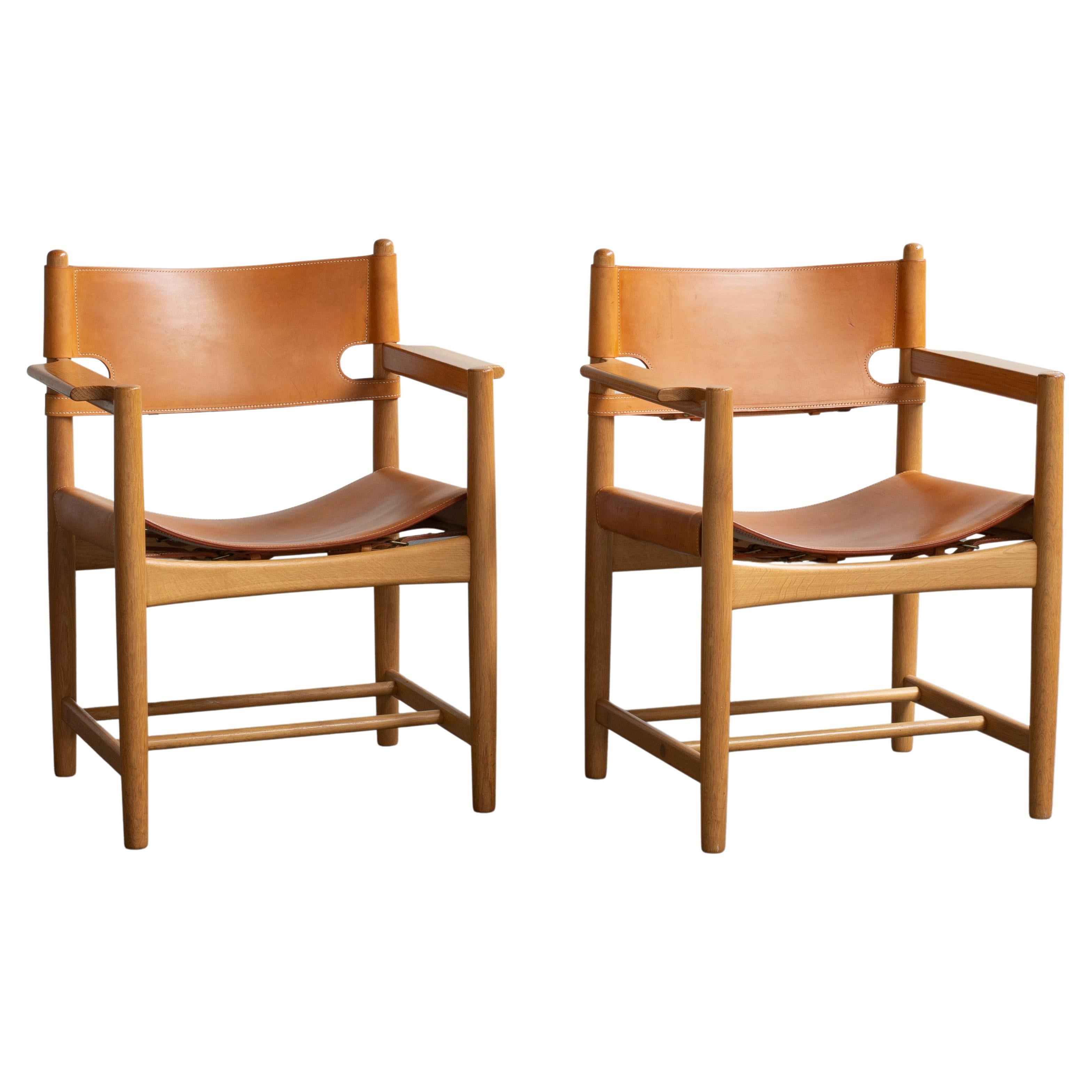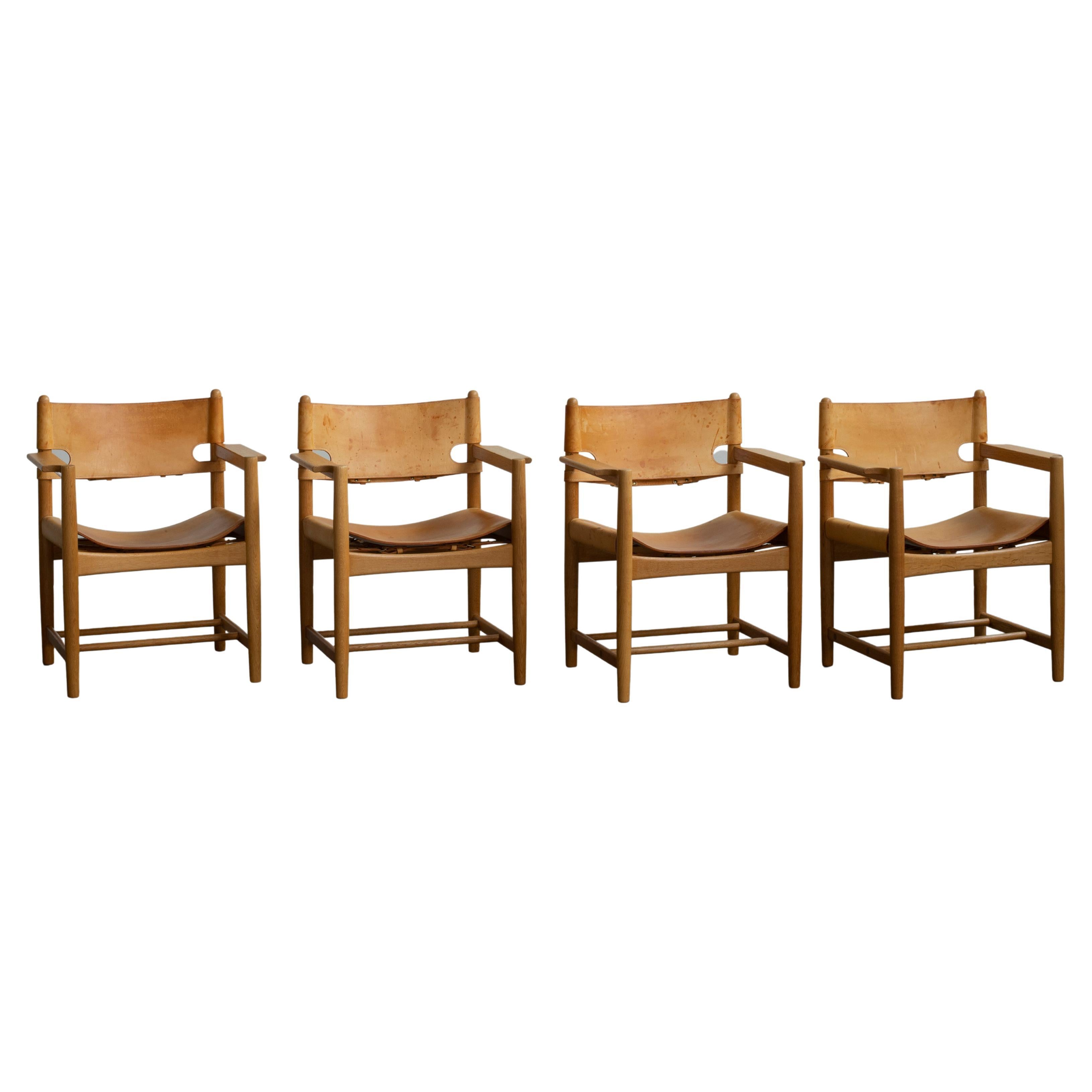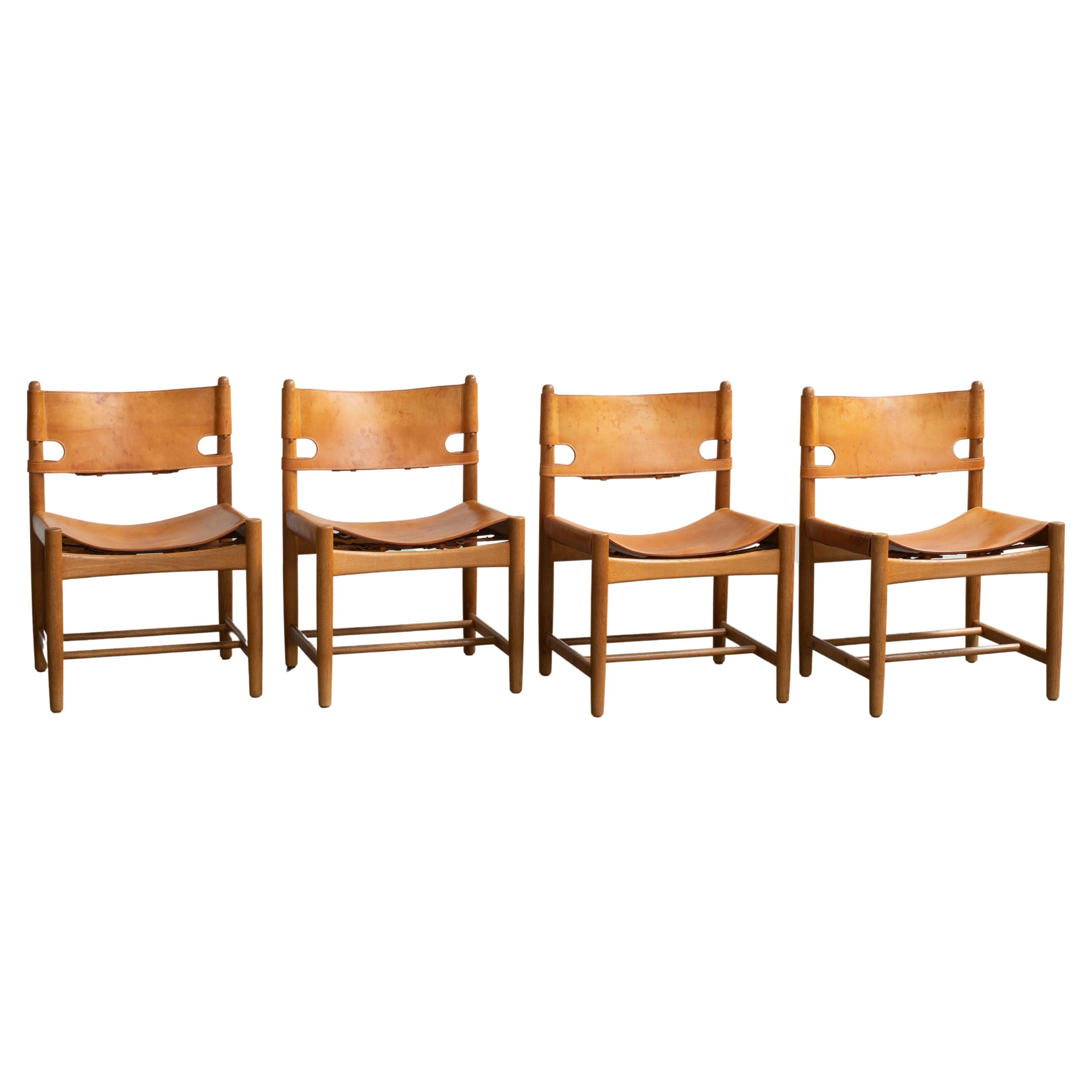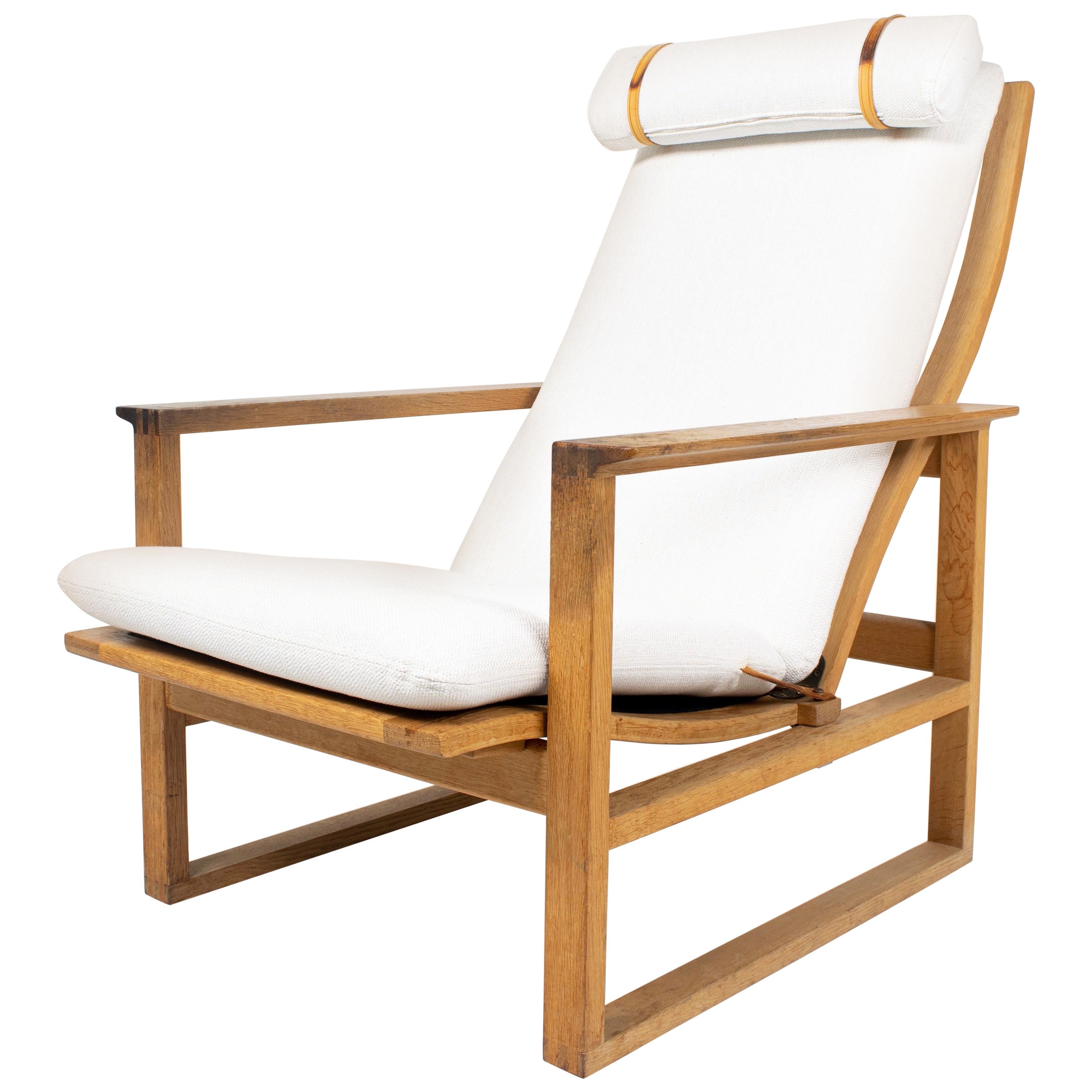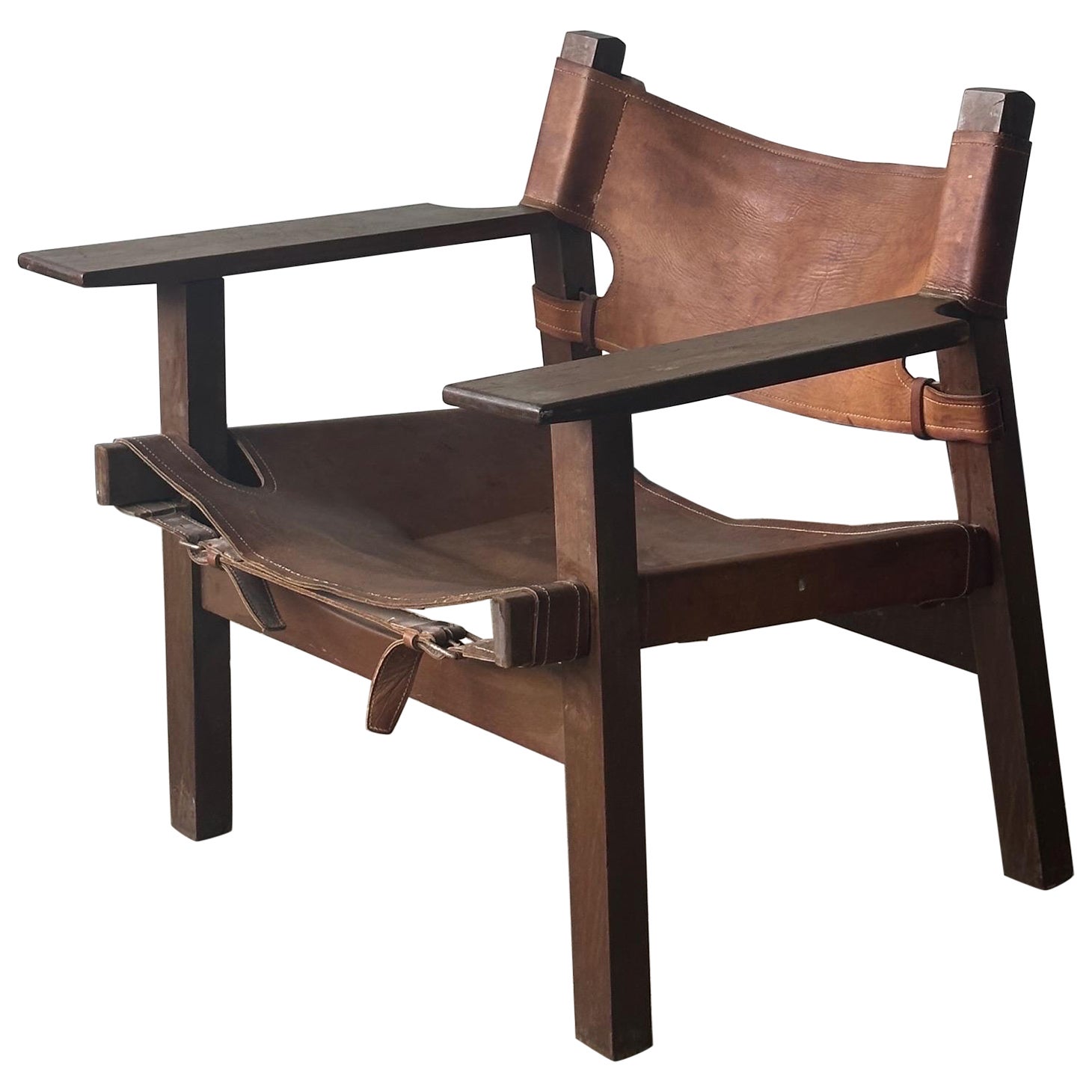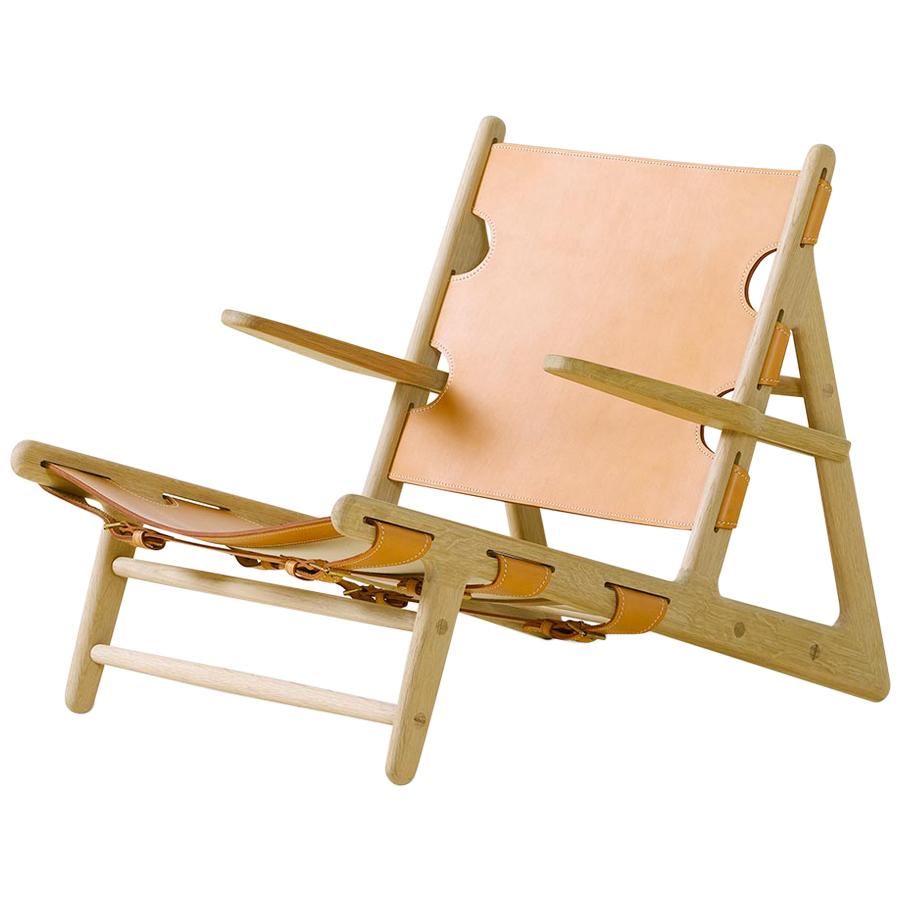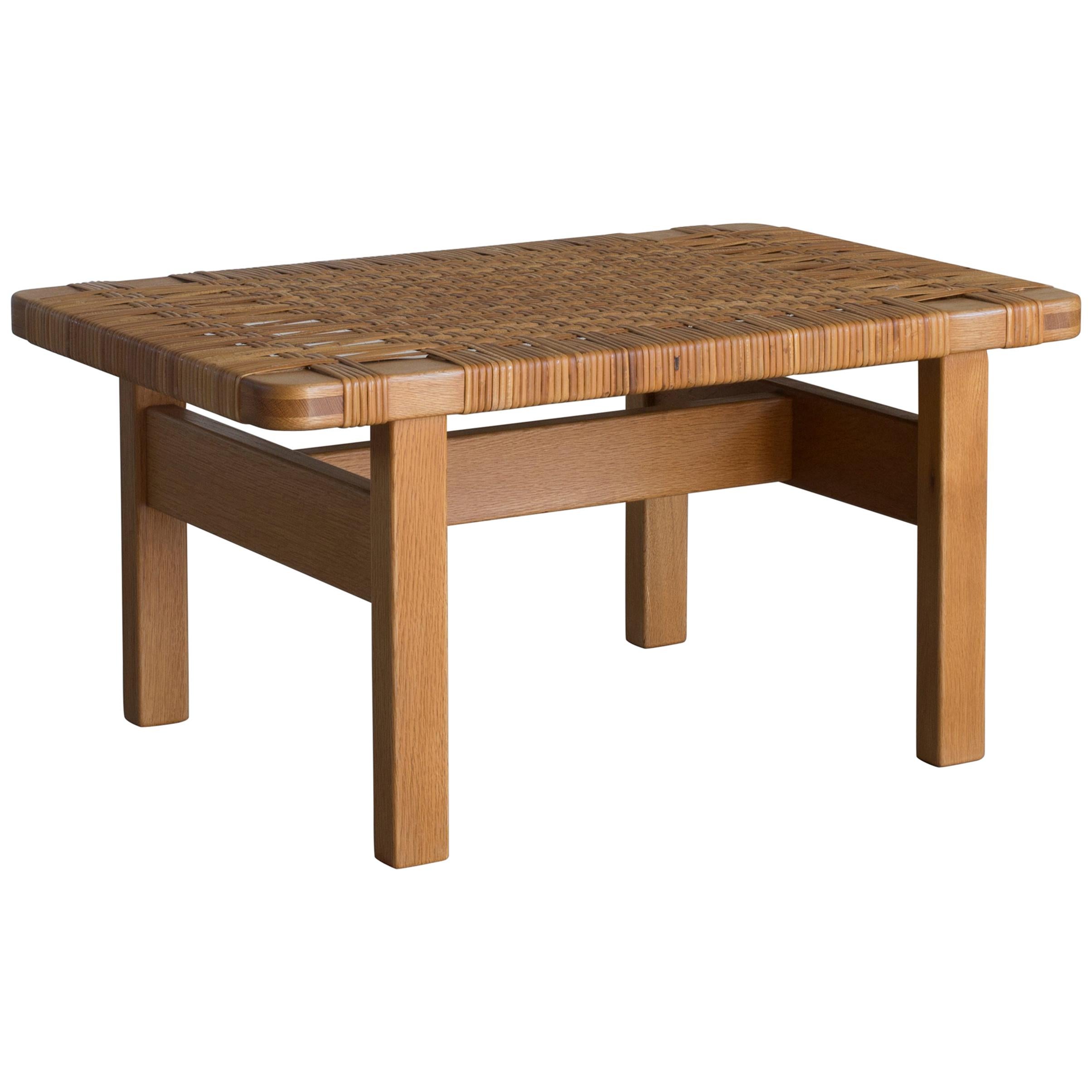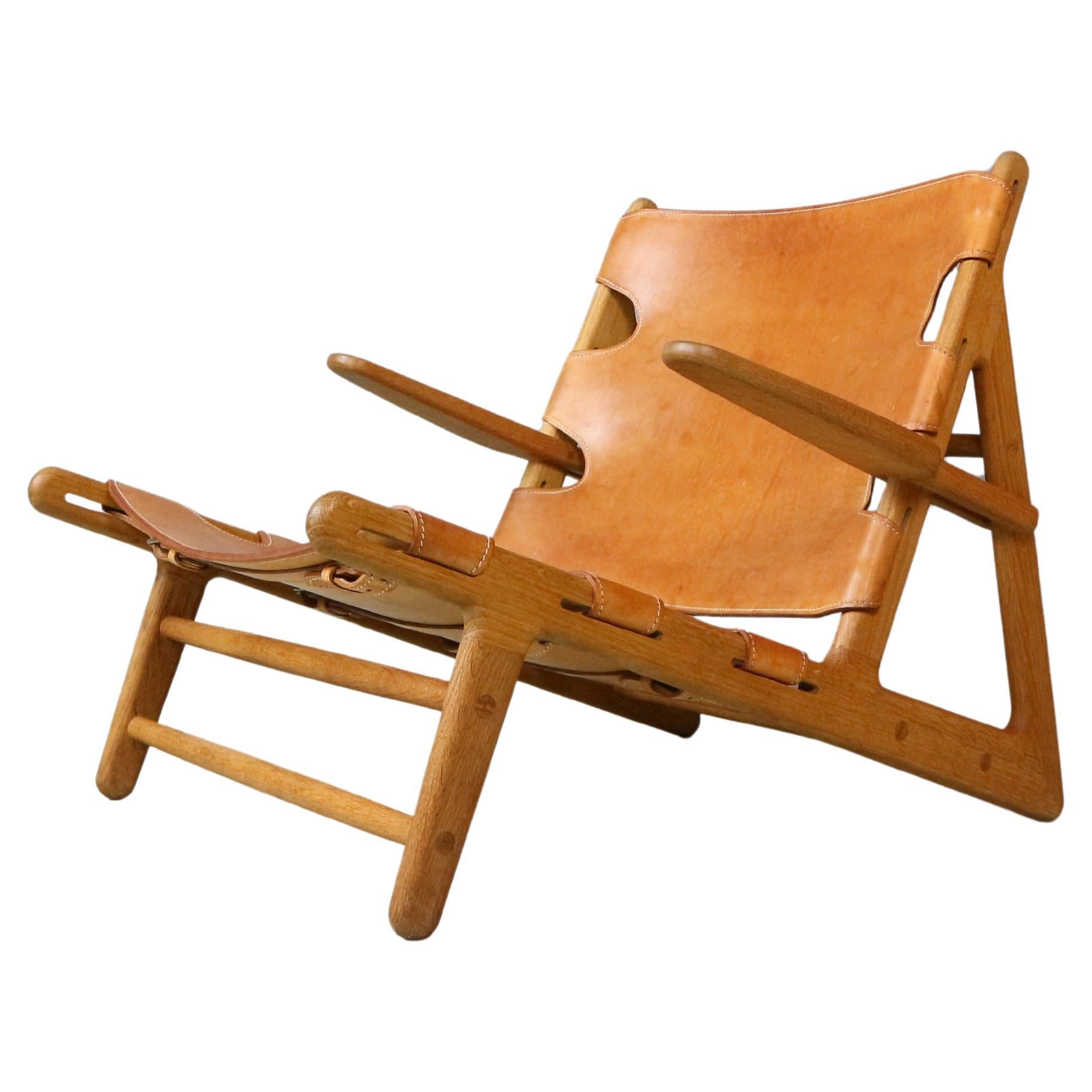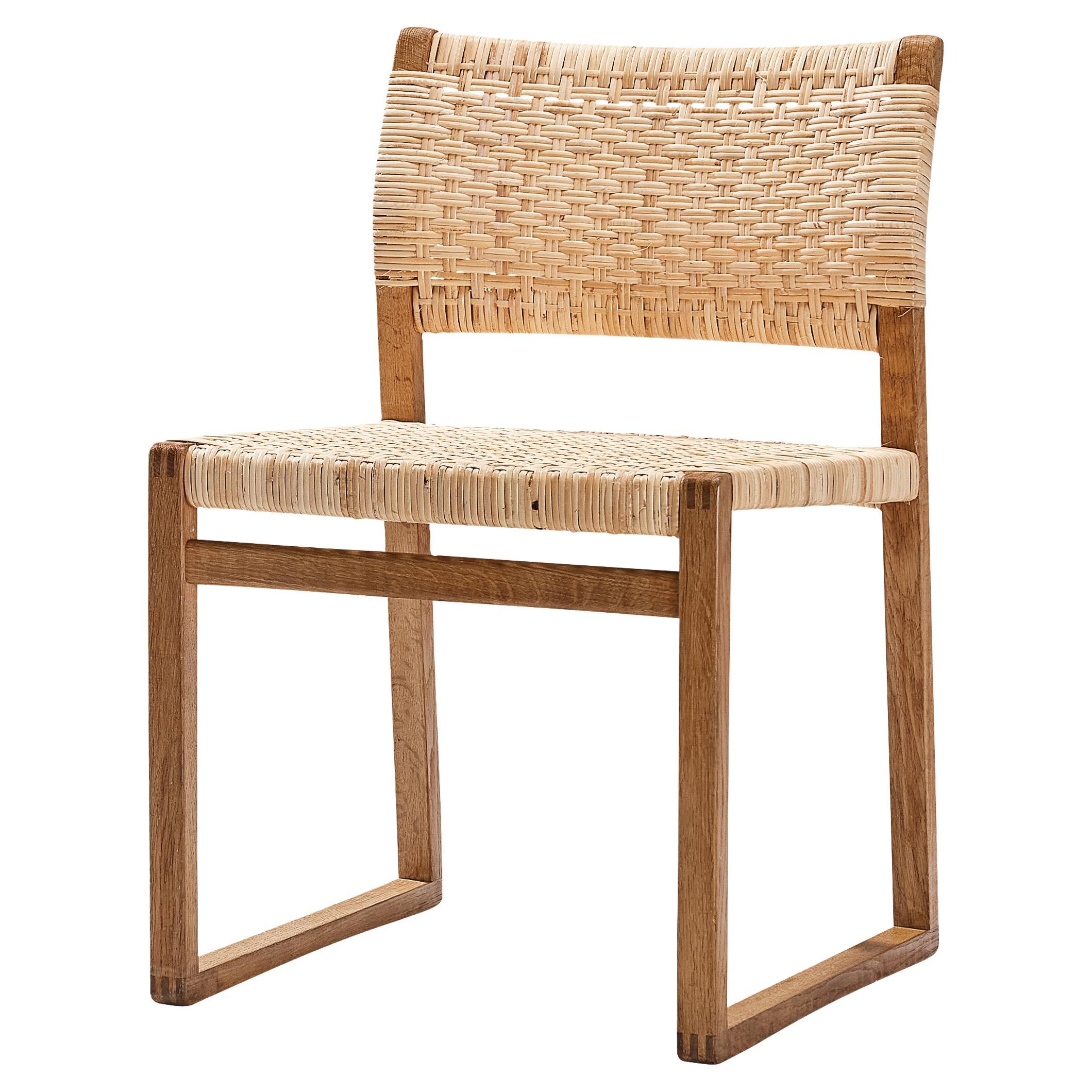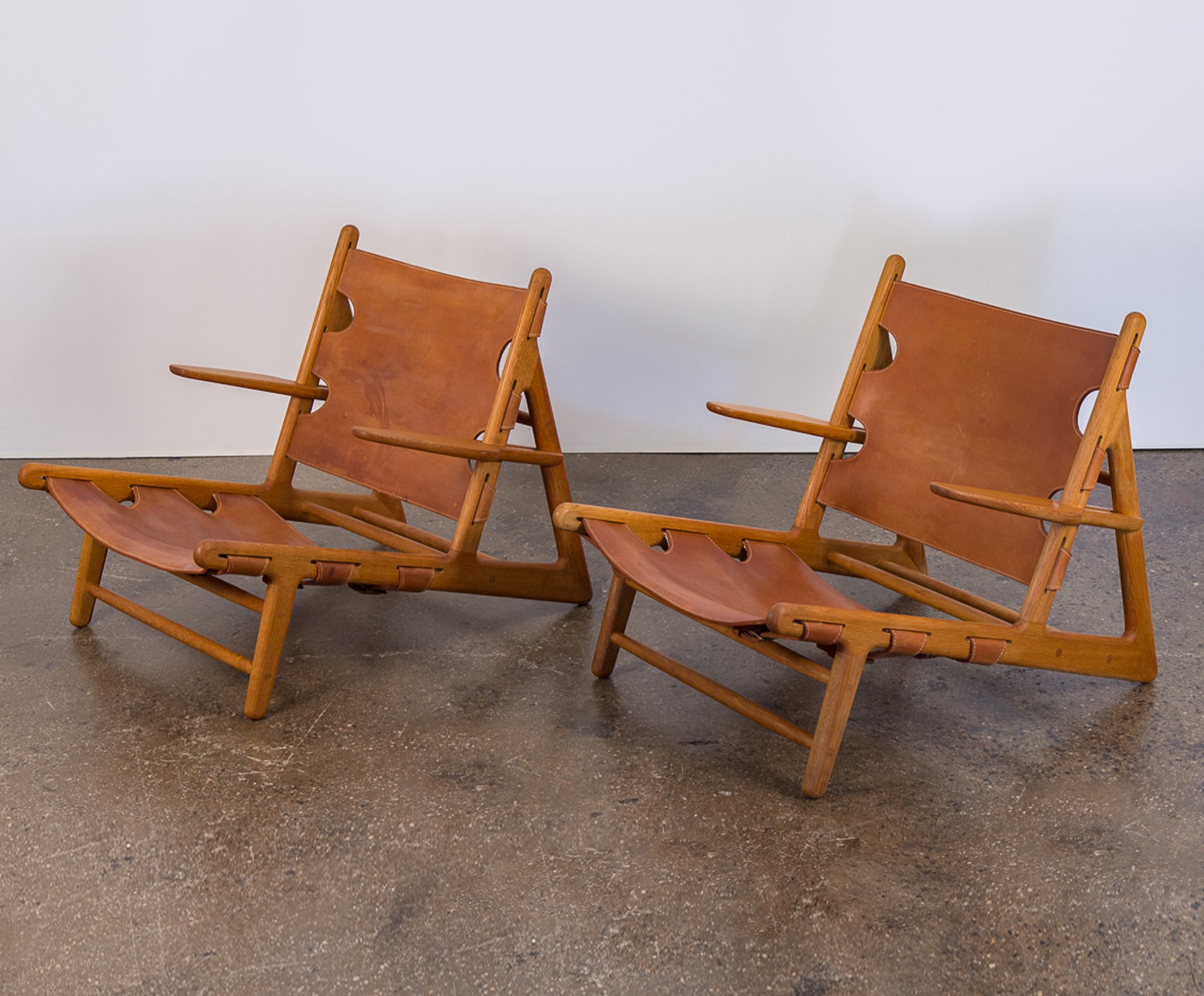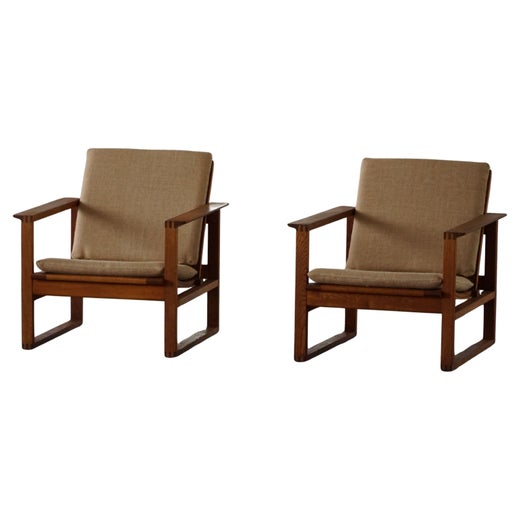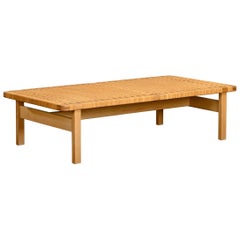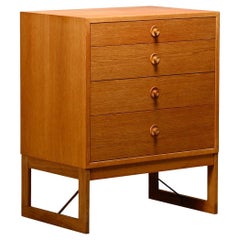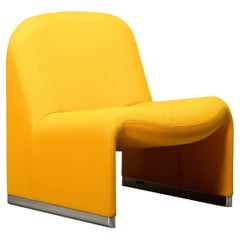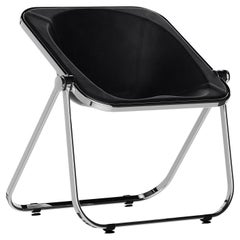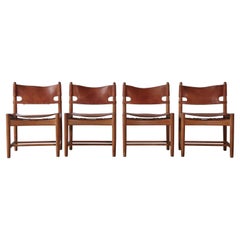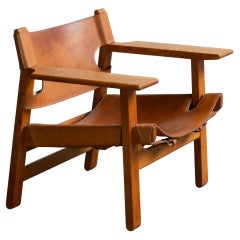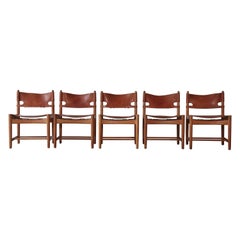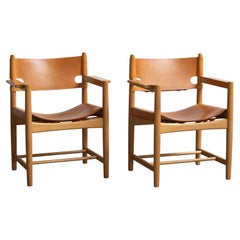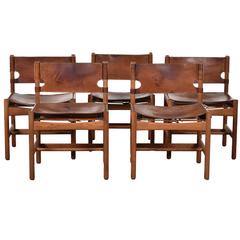
Børge Mogensen 'Hunting' Chairs (Model 3251) for Fredericia Furniture
View Similar Items
Børge Mogensen 'Hunting' Chairs (Model 3251) for Fredericia Furniture
About the Item
- Creator:Børge Mogensen (Designer)
- Design:
- Dimensions:Height: 31.5 in (80 cm)Width: 22.05 in (56 cm)Depth: 18.12 in (46 cm)Seat Height: 17.72 in (45 cm)
- Style:Scandinavian Modern (Of the Period)
- Materials and Techniques:
- Place of Origin:
- Period:
- Date of Manufacture:circa 1965
- Condition:Wear consistent with age and use.
- Seller Location:Amsterdam, NL
- Reference Number:1stDibs: LU171025537843
Hunting Chair
With an exposed oak frame and a saddle leather seat and back, the Hunting chair by Børge Mogensen (1914–72) bears a striking resemblance to the kind of rustic furniture you might find in the American West, but its comely, low-slung profile is an attribute that connects it squarely to Danish modernism. Alongside greats such as Arne Jacobsen and Finn Juhl, Mogensen was a pioneer of this movement — he was an artisan who wanted to create long-lasting and practical furniture that could be of use every day.
Born in Aalborg, Mogensen moved to Denmark's capital city of Copenhagen to study cabinetmaking. He began his design career as a teaching assistant to Kaare Klint, under whom he studied at the Royal Danish Academy of Fine Arts, then moved on to manage the studio of furniture maker FDB Møbler.
In 1948, ever guided by a desire to create unpretentious furniture, Mogensen, along with friend Hans Wegner, entered the "International Competition for Low-Cost Furniture Design" sponsored by the Museum of Modern Art in New York City. Two years later, Mogensen opened his own private design practice, during which time he developed the Hunting chair as an entry to the Copenhagen Cabinetmakers’ Guild’s autumn exhibition, fittingly themed “The Hunting Lodge.”
In 1952, Mogensen began collaborating with Andreas Graversen, who would eventually go on to acquire Fredericia Furniture in 1955. The two worked collaboratively throughout the rest of Mogensen’s life on revered designs such as the Spanish chair, one of Mogensen’s most famous works. Graversen and Mogensen were awarded the Danish Furniture Prize in 1971, while Mogensen went on in 1972 to be awarded the prestigious C.F. Hansen Medal — the highest honor bestowed upon architects in Denmark.
Mogensen’s furniture was incredibly functional in nature and designed specifically for mass industrial production — he was inspired by the era’s technological advancements but desired to keep his works modest and humble for the average homeowner. His signature aesthetic was simplicity, and the Hunting chair, which offers sleek rounded armrests as part of what was his first design to feature an exposed wooden frame, remains popular for its portability and for being very comfortable.
Today, the Hunting chair is still produced by Fredericia and is available with different oak finishes and either black or natural saddle leather seats.
Børge Mogensen
Among the great mid-20th century Danish furniture designers, Børge Mogensen distinguished himself with his faith to traditional values of craftsmanship and honesty of materials.
While peers such as Hans Wegner, Finn Juhl and Arne Jacobsen designed some of the most striking and now iconic furnishings of the era, Mogensen focused on making chairs, sofas and other pieces that were simple, durable and comfortable — and in the long run perhaps more useful and better loved.
Mogensen studied under and later worked for Kaare Klint, a master cabinetmaker whose chief tenets were quality of construction and simplicity of line. Klint was a classicist, who believed that furniture forms should evolve from those of historical models. So, too, in his way was Mogensen, as two of his best-known earlier pieces attest.
His 1945 Spokeback sofa, with hinged arms that can be lowered to facilitate lounging, is a reinterpretation of the venerable Knole settee. With the oval silhouette of its plywood backrest and waterdrop-shaped cutouts, Mogensen’s Shell chair, designed in 1949, can be seen as a novel take on early 19th-century Empire side chairs.
Yet Mogensen shared the aesthetical sensibilities of his most forward-looking colleagues. His cabinets deploy the same spare geometries and lushly figured woods as those of Ludwig Mies van der Rohe and his disciple Florence Knoll, the chief difference being that Mies and Knoll used chrome steel for the frames and legs of their pieces. The brawny oak frames and slung leather seats and backrests of Mogensen’s Hunting chair (1950) and Spanish chair (1958) display the same hefty construction and appreciation of natural materials seen in the work of Charlotte Perriand and Sergio Rodrigues.
Mogensen designed for function more than sculptural effect. While his chairs may not be the first pieces in a décor to draw the eye, they are often the first to draw in those looking for a comfortable seat.
Find vintage Børge Mogensen dining tables, bookcases and other Scandinavian modern furniture for sale on 1stDibs.
More From This Seller
View AllVintage 1950s Danish Scandinavian Modern Benches
Cane, Oak
Mid-20th Century Swedish Scandinavian Modern Commodes and Chests of Drawers
Wood, Oak
Vintage 1960s Italian Mid-Century Modern Chairs
Metal
Vintage 1970s Italian Mid-Century Modern Chairs
Steel, Chrome
Vintage 1960s Italian Mid-Century Modern Chairs
Metal
Vintage 1960s Italian Mid-Century Modern Chairs
Steel, Chrome
You May Also Like
Mid-20th Century Danish Mid-Century Modern Dining Room Chairs
Leather, Oak
Mid-20th Century Danish Scandinavian Modern Chairs
Leather, Oak
Mid-20th Century Danish Mid-Century Modern Dining Room Chairs
Leather, Oak
Vintage 1980s Danish Scandinavian Modern Armchairs
Leather, Oak
Vintage 1980s Danish Scandinavian Modern Armchairs
Leather, Oak
Mid-20th Century Danish Scandinavian Modern Chairs
Leather, Oak
